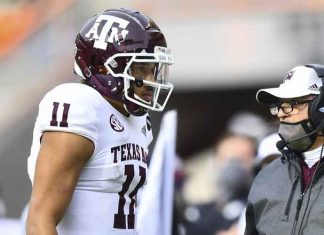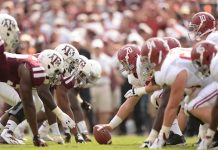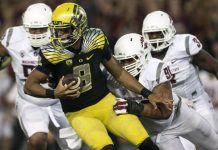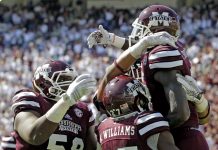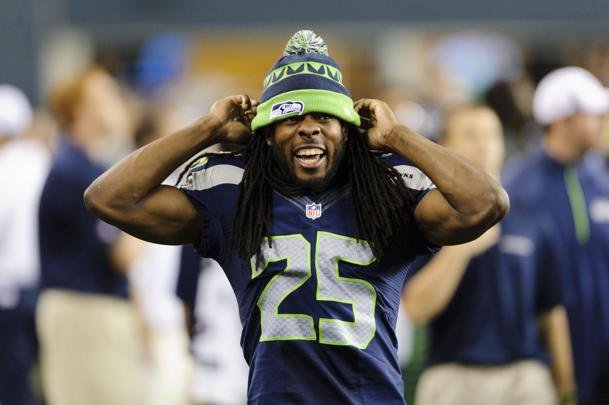(STATS) – The sight of players from FCS national champion North Dakota State returning to workouts on campus Monday will be welcome to many people, maybe even to the Bison’s fiercest rivals, who also seek a similar sense of normalcy during an offseason like none before.
Monday is the first day the NCAA will allow member schools to re-open their athletic facilities to student-athletes for voluntary workouts, though without coaching supervision. They come several months after all college sports were shuttered due to the coronavirus (COVID-19) pandemic.
“Our number one priority throughout this spring has been the safety and well-being of our student-athletes, and that will remain the top priority,” NDSU coach Matt Entz said last week, echoing a sentiment across college athletics.
“Many of our players have found creative ways to stay active from remote locations, but they also miss being with teammates and having more structure and ability for complete workouts.”
The schools that are ready to allow campus workouts again and those that aren’t vary across the nation, so only some will re-open facilities on Monday. It’s an important step for any plan, but the way schools will get back to playing football this fall is still developing.
Football, of course, is woven into the fabric of college communities and often the biggest sport revenue-wise. In 2020, the Football Championship Subdivision – the lower half of Division I, where North Dakota State has won eight of the last nine national titles – will have 126 schools from 13 conferences spread across 37 states and the District of Columbia.
Considering the level involves different states, institutions and conferences, there will be many protocols, but the link for everyone, is “prudent, practical, common-sense decisions,” Colonial Athletic Association commissioner Joe D’Antonio said.
“The good news is I think we’re all pretty optimistic that we’ve got a chance to pull this off and play football this fall. That’s what we’re working toward,” said Patty Viverito, a driving force in the FCS as commissioner of both the Missouri Valley Football Conference and the Pioneer Football League.
“Of course, the caveat in all that is we just need to figure out how to do it safely and soundly and hopefully without a crazy expense involved. We’ll see what the virus throws our way with pulling that off.”
A deluge of information regarding the 2020 season is being held off until the summer. Conferences have the most hopeful plans, but also have considered contingencies for something less than a normal season – perhaps with a shortened schedule and surely with smaller crowd sizes than allowed in the past. Much of the decision-making is being put off because Sept. 1 health scenarios could be different from June 1 scenarios, and perhaps for the better.
“It’s more about what’s best for our student-athletes, what’s best for our campuses,” Big Sky Conference commissioner Tom Wistrcill said.
COVID-19 has caused more than 100,000 deaths in the United States this year, so there aren’t shortcuts in the return to sports. Student-athletes back on campus will mean social distancing and proper safety measures, including wellness checks performed by sports medicine staff. Individual schools will be required to meet state and local health guidelines, and each conference will try to bring together the standards to allow schools to host other teams in competition.
“What that’s going to provide is this level of trust amongst the conference schools,” Wistrcill said, “that when Montana boards an airplane and flies to Northern Arizona for a football game that these, whatever it may be, 17 things are all being done to their locker room, training room, the field and any area that they would come in contact with on campus.”
The prevailing thought across the NCAA is there could be a minimal standard of coronavirus testing prior to any competition. Such an endeavor may be too expensive for many schools today, but testing is developing and becoming more cost-effective at a rapid pace.
How much preparation occurs on campus, beginning on Monday, will vary by school, but that isn’t necessarily the first concern during re-openings. The NCAA’s Division I football oversight committee, which helps to ensure appropriate measures in the sport, is expected to advocate for schools to have a minimum of four weeks of preseason preparation up to a six-week maximum in July and August.
“Competitive equity becomes secondary to playing football,” Viverito said. “When folks are ready to go based on their local standards and their institutional wishes, we’re going to start practicing. Hopefully, we’ll have enough teams that are ready to go at the start of the season to be able to warrant that. Is it going to be a hundred percent? I don’t know, it seems hard to imagine we’ll be at a hundred percent, but I think we’ll have a vast majority. At least that’s what we’re hearing from institutions about their willingness and readiness.”
While there’s no definitive game plan for insuring against possible virus transmission and outbreaks, schools and conferences are committed to making intelligent decisions while allowing the health policies to point the way. Viverito believes a 2020 season with “zero hiccups seems pretty unreasonable. But I don’t think you shut down an entire football season if the challenges we have are isolated.”
Added Wistrcill, “I feel very positive that we’re going to play college football this fall. I just don’t know what it’s going to look like right now.”
25% Bonus via Western Union



